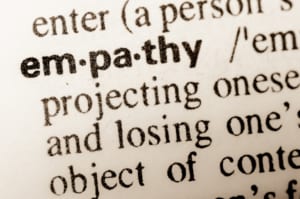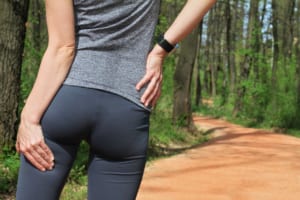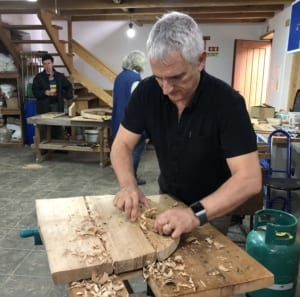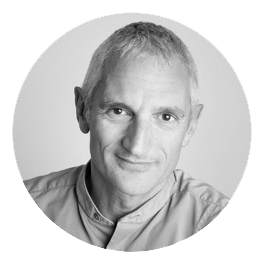What is a meaningful connection?
At the beginning of a new year it’s natural for our minds to turn to change. I’m sure we all feel exhausted by the volume and variety of exercise advice in the media and perhaps conflicted about whether we should do Dry January, Veganuary, or possible both! Actually, I find it interesting that when we talk about ‘change’ we often mean physical change. As an Osteopath and Naturopath, I’m a firm believer in the need to eat well, maintain a reasonable weight and keep active. These things are important in helping us to live a healthy life.
But what about our attitudes and opinions?
We are all a product of our upbringing and experiences. These things inform what we believe and often how we react to people and situations. But, once we become adults, how often do we test these beliefs? How many of us can say that we are open to new ideas or considering the other side of an argument? Yet an open mind, curiosity and a willingness to learn could be considered just as vital to being a fit and healthy human.
Antagonism, division and polarisation seem to have become the starting point for what passes as debate in recent years. There is so little respect for or curiosity about a different opinion. Which is why I was so intrigued to learn about Megan Phelps-Roper. Megan grew up in the Westboro Baptist Church, an American church known for its use of inflammatory hate speech, especially against the LGBT and Jewish community. From the age of five she was regularly picketing against these groups, holding up placards that she couldn’t even read. Obviously the pickets were often met with hate and sometimes violence. But living the Westboro doctrines, and believing every word of them, was Megan’s life for the next 20 years.
Life changing conversations are possible
Until she joined Twitter! Which she credits for the start of civil conversations full of genuine curiosity on both sides. The cynical among us may say that this doesn’t sound like Twitter! But it was absolutely Megan’s experience. And eventually these conversations planted seeds of doubt in her mind. As she says: “Friends on Twitter took the time to understand Westboro’s doctrines and spotted inconsistencies that I’d missed for my whole life.”
The results of these conversations with people who often represented all that Megan had been taught to hate, was that she left the Church in 2012. She became a prominent critic of the church, its philosophy and practices and now lobbies to overcome divisions and hatred between religious and political divides. In her Ted Talk she urges us to talk and listen to people we disagree with and gives four valuable tips for getting the most from those conversations:
Don’t assume bad intent.
This attitude cuts us off from understanding as we get stuck on anger. Try to assume good or neutral intent and this provides a much stronger framework for dialogue.
Ask questions.
This helps you to understand where the other person is coming from. And it signals to them that they’re being heard. Megan found that when people started to ask her questions about her beliefs, she automatically mirrored this behaviour. And so, a conversation developed.
Staying calm.
This takes patience and practice. It’s natural in stressful or confrontational situations to raise the temperature but this can bring any conversation to an explosive conclusion. One of the advantages of online conversations is that (contrary to popular opinion) there is no need to reply immediately. So, it’s a good idea in those circumstances to pause, breathe and consider before typing!
Make the argument.
We can assume that the value of our own argument is obvious if we hold strong beliefs. And that we shouldn’t have to defend our position because it’s so clearly right and good. The implication being that if someone doesn’t get it, it’s their problem — and it’s not our job to educate them. But we are all a product of our upbringing, and our beliefs reflect our experiences. We can’t expect others to spontaneously change their own minds. If we want change, we have to make the case for it.
Whilst Megan’s views were obviously extreme, and the change she effected was massive, I think it’s good for us all to be open to engaging with people who hold different views from our own – a sentiment perhaps most memorably summed up by the author Evelyn Beatrice Hall, in her famous quote: “I disapprove of what you say, but I will defend to the death your right to say it”.
Life Coaching and NLP
Aa a qualified Life Coach based in London, I work with clients towards achieving self confidence, self awareness and clarity about how to achieve their goals, all invaluable qualities and ones which Life Coaching can inspire in you.
Find out more about Life Coaching

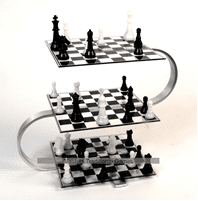 To return to the Naturopathic Triangle, I like to think of what I do as playing chess on a three-layered board. With the top layer representing the physical being, the middle board the emotional and the bottom board the nutritional. And a move on the top board will affect not only the pieces on that board but also those on the middle and bottom.
To return to the Naturopathic Triangle, I like to think of what I do as playing chess on a three-layered board. With the top layer representing the physical being, the middle board the emotional and the bottom board the nutritional. And a move on the top board will affect not only the pieces on that board but also those on the middle and bottom.